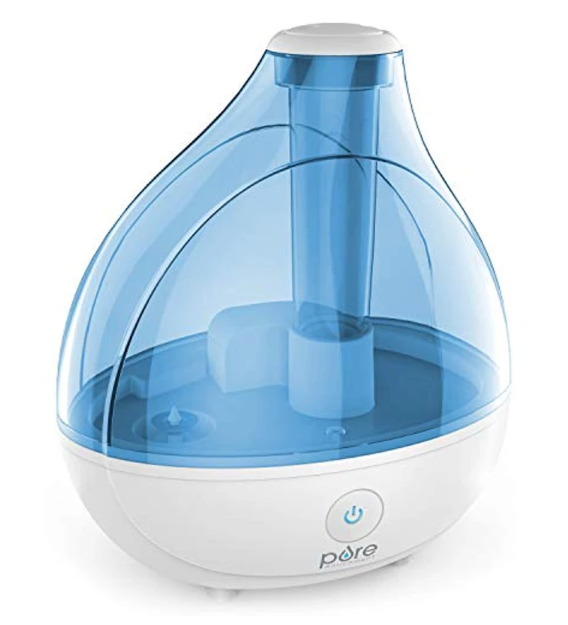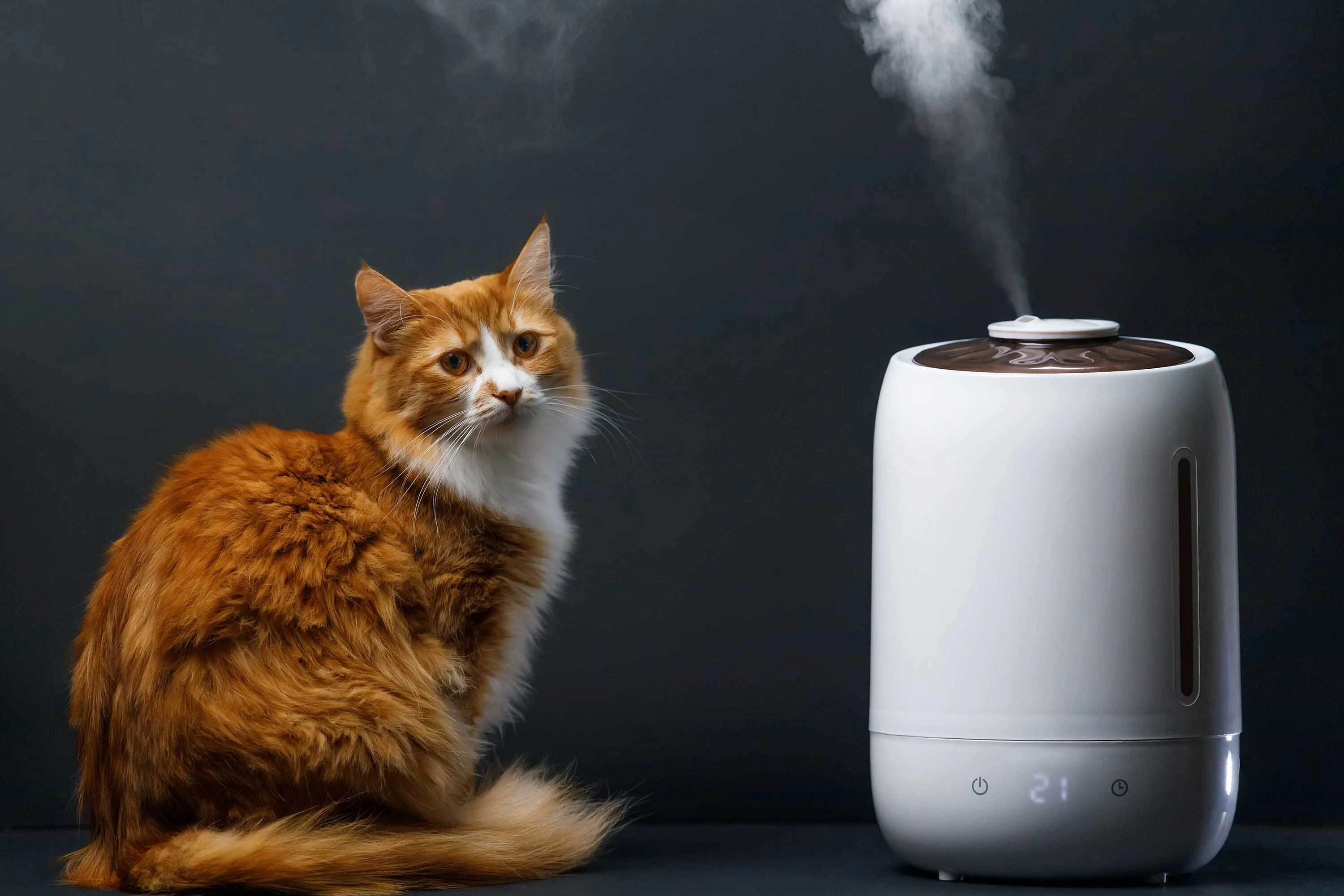Cannabis, like all plants, prefers certain environmental conditions in order to thrive. One of the major benefits of cultivating it indoors is that growers have the ability to manipulate their environments to suit the needs of the plants. Temperature, humidity, light intensity, and airflow are all factors that will need to be monitored and regulated in order to keep cannabis healthy through its different phases.
Why Should We Control Temperature and Humidity
Dry air results in your plants losing more water when respiring than in moist air. This reduces the overall moisture content in your weed. If the environment gets too dry (low humidity), your plants lose more moisture than they can regain through their roots.
If this happens, your plants close the pores in their leaves to minimize water loss. It is an effective tactic, but it means they receive less CO2 from the environment. The result is cell death within your cannabis plants.
It is tempting to think that you can just water your plants more often in dry conditions. However, you will end up over-watering the soil and reduce the amount of air in the growing medium. Your plants will suffocate and become more likely to develop root rot.
If you allow excessively high humidity levels, you increase the risk of diseases such as bud rot. The reason for this is that it allows moisture to build up in the plants’ thick foliage.
By setting your grow room to the right temperature and humidity level, your plants flourish. They open their pores, respire CO2, and grow quickly. Leading marijuana growers say beginners should look to achieve the following humidity levels in their grow room. Naturally, this is determined by the length of the marijuana plant’s life cycle.
Controlling Temperature
The temperature in a grow space has an impact on the metabolic rates of the plant. The porous openings on the plant determine the intake of C02, heat, and light. Simply put, stomata are an inbuilt AC unit for plants. As the stomata open and produce water vapor, they transpire and remove freshwater from the roots up.
That said, when the temperature in the environment is low, this might slow down the plant processes, and this might hurt their overall growth. However, when the climate is warmer than usual, these systems work harder, and the stomata might close up. If the stomata close up, the water and nutrient delivery decreases and the plant fails to cool down as required.
You can regulate the temperature by manipulating for critical factors. They include:
- The light – perhaps the most significant impact on the garden temperature relates to the type of light you are using, and the amount of heat it produces. Different grow lights will provide varying levels of heat and signatures. All these also depend on the size of your space, which in turn affects the room temperature. Incandescent lights such as metal halides and compact fluorescent lamps can produce lots of heat in small areas. That said, even some LED bulb brands can also produce heat.
- Airflow – controlling the flow of air is an efficient technique for regulating the flow of hot and cold air in a grow room. The flow of air is vital in ventilation, especially in regard to the elimination of bad quality air from the grow room. More so, airflow is also crucial for canopy plants, which require top-notch ventilation and air quality.
Tools for Regulating the Flow of Air in Growroom
- Fans and ducts – these are tools for controlling the flow of air. The fans direct the flow of air to a specific direction, and ducting helps to direct air in and out of the grow space.
- Inline fans – these are tools that help to remove air from the garden. The oscillating and stationary fans direct fresh air through the garden. Even more, they also have ducted hoods, which can remove the hot air that often fills the canopy.
- Air Conditioners – while an air conditioner adds to the overall cost of managing your grow room, it’s an essential component, especially for commercial growers. The benefit for growers is that the consumer market has various types of air conditioners available. You can go for the smaller versions if you feel you already have ballooned energy costs.
- Heaters – during the winter seasons, or if you perhaps have plants that are sensitive to the cold, then you will require a good heat. Similar to air conditioners, you can easily find some of the best and affordable heaters on the market.
Balancing the System
It can be challenging to find the right amount of temperature and humidity because these components have effects on each other. Thus, turning up the dehumidifier might reduce the humidity levels of your grow space, but might also increase the temperature levels in the area. This might, in turn, require you to turn on the AC unit, and everything is ready to go!
Depending on the severity of the seasons in the area, you can schedule the light cycles in relation to the temperature levels outdoors. During the summer, the increased temperature levels mean that you have to regulate the temperature levels of your grow rooms for the best results. The same applies for winter when you might have to adjust the light cycle such that night time plants don’t get affected by the cold.
Why is Low Humidity Bad for Plants?
Plants consume a lot of water, but a small amount of it remains for developing new cells. Most of the water passes through the plant and is sucked up through the roots. The water then passes through the vascular structure, and then through tiny holes referred to as the stomata. Aside from nutrition, plants require lots of water to serve as a coolant.
Dry and low humidity levels might create what is referred to as a high vapor pressure deficit. This means that the interior of the leaves on the plant has full moisture. Thus, this would affect the ability of the plant to remove waste products and its nutritional process as well. Such conditions also cause the plant to work harder, which hurts the result of the yield.
As such, most growers prefer starting the seedlings by using propagators. These are tools that help to seal the moisture to create the perfect humidity levels for the environment. Thus, your small and tender seedlings can focus on growth without having to overwork their small rooting systems. That said, what happens when your plants outgrow the propagator?
Increasing Relative Humidity Inside a Grow Tent
Using a grow tent is perhaps one of the most effective ways to create the perfect environment for your plants. You get the freedom to dedicate a specially customized grow area to suit the yield of specific plants. Being able to control the temperature levels
Humidity refers to the amount of water vapor accumulated in the air. There are four vital resources to consider for controlling the humidity levels. They include:
- Dehumidifiers – the dehumidifiers remove moisture from the air. These tools are often used in indoor grows spaces, because plants in small areas can release lots of moisture. Thus, a humidifier can be an easy and convenient way to track the humidity levels in the grow room.
- Humidifiers – a humidifier can provide a constant flow of water vapor for plants that require specific levels of water vapor. These are tools that leverage cold water to produce a mist that releases water through space, and also improves the levels of moisture. Helping to increase the amount of moisture in a grow room or a grow tent, ECO Farm humidifier can also increase the same in offices, residential apartments, schools, hotels and greenhouses among other places.
- Water – if you don’t have a humidifier, consider using a mist spray bottle to produce additional moisture.
NB: Using these resources effectively relates to the size and space within the grow room. These are also factors to consider when purchasing components such as air conditioners.
Recommendation: Best Humidifier For Grow Room

ECO FARM Hydroponics 8L Capacity Air Humidifier Grow Room Tent
ECO FARM Hydroponics 8L Capacity Indoor Household air Humidifier growing Room Tent Diffuser increases humidity in dry living spaces. It’s quiet while operating, and it includes a convenient tank handle for easy transportation when filling and cleaning. Thanks to the transparent tank, you can easily see when water levels are low.

Pure Enrichment MistAire Ultrasonic Cool Mist Humidifier
The sleek 1.5-liter water tank is easy to fill right from your kitchen or bathroom sink. One full tank safely moisturizes the air for up to 16 hours of continuous operation on the high setting, making it ideal for uninterrupted overnight use. Safely moisturizes the air for up to 16 hours of continuous operation so you can breathe easy and get more restful sleep | High and low speed settings make it easy to adjust mist direction and speed to fit your comfort level. Plus, it’s so quiet it’s ideal to use in your:
Overall
Unfortunately, temperature and humidity control can only be as good as you are informed as a grower. You have to learn about the correct principles and methods behind growing specific plants. This way, you can give the plants an ideal environment to grow and survive, thus improve the result of your yield. A grow room is perhaps one of the most effective approaches for creating a perfect environment for your plants.
Broadly speaking, most plants perform best at 77°F (25.9°C), while some prefer the temperature to be at an average of (81-86°F). Using an informed approach is your best bet at achieving the best grow room results.























